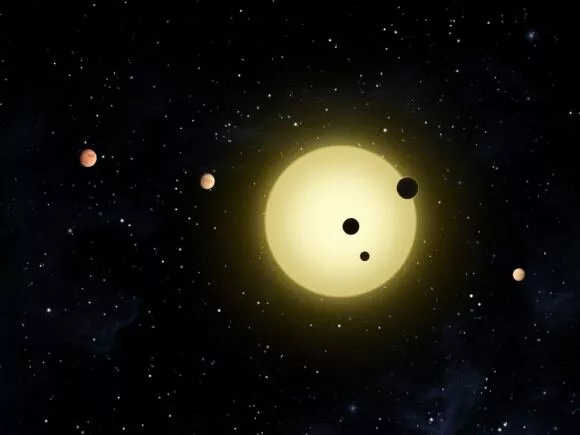Chinese scientists have proposed a sky survey through space telescopes to find habitable earth like planets outside the solar system about 32 light-years away from the earth If implemented, this will be the first international space exploration mission dedicated to finding habitable earth like planets around nearby solar like stars.

Ji Jianghui, a researcher at the Zijinshan Observatory of the Chinese Academy of Sciences and the project leader of the "nearby livable planet survey plan", recently told reporters that exploring livable planets outside the solar system is one of the basic research frontiers of astronomy, which is related to major scientific issues such as "whether the earth is unique" and "how planets become the cradle of life".
Ji Jianghui said that at present, humans have found and confirmed more than 5000 extrasolar planets, including about 50 earth like planets belonging to the habitable zone, but most of them are thousands of light-years away from the earth. "Finding an extrasolar earth like planet with close neighbors will be a major discovery of mankind and will also provide help for mankind to visit them and expand living space in the future".
Ji Jianghui introduced that the "near neighbor habitable planet survey plan" will observe about 100 solar like stars about 32 light-years away from the earth for a long time. It is expected to find habitable zone earth like planets around them for the first time, especially "earth 2.0" (planets very similar to the size, orbit and environment of the earth), so as to achieve a major breakthrough of "from 0 to 1"** It is estimated that the program is expected to find about 50 earth like planets. Scientists will give information on the number, real mass and three-dimensional orbit of habitable planets and "super earth" (exoplanets several to 10 times the mass of the earth) through a detailed survey of the solar system's adjacent planetary systems.
According to reports, the Kepler space telescope and Tess satellite of the United States and other space projects to find extrasolar planets adopt the transit star detection method. At present, the vast majority of extrasolar planets discovered by humans are found through the transit star method. Its principle is that the use of orbiting planets will lead to periodic weak changes in the brightness of stars when passing in front of stars. This detection method has high requirements for the orbit of the planet. The planet needs to pass through the star and face the earth, but the probability of this situation is very low. At the same time, it needs to be further confirmed by other detection means. Lingxing method can only obtain the radius of the planet, and can not directly give the mass of the planet.
Ji Jianghui said that China's "near neighbor livable planet survey plan" will accurately measure the changes in the star spacing of the target star's center position relative to 6 to 8 standard reference stars based on space high-precision relative astrometry technology, calculate the small shaking of the target star disturbed by the planet's gravity based on these subtle changes, and detect the earth like planets in the livable belt with real mass around the star**
"Astrometry is a classic method in astronomical observation, but its application to the detection of habitable earth like planets is a primitive innovation in technology. To find 'earth 2.0' in the habitable zone of adjacent solar like stars, we need to achieve unprecedented accuracy in measurement technology, that is, to reach the micro angle second level, which is equivalent to being able to distinguish a dollar coin placed on the moon on the earth." Ji Jianghui said.
"Our detection method is not limited by the orbital plane of planets. Planets in any orbit can be detected and the mass of habitable planets can be measured directly. Therefore, a comprehensive survey of planets around adjacent solar like stars can be realized. These studies will eventually answer scientific questions such as' is the solar system special 'or' are we the only one in the universe ', and give mankind a deeper understanding of the formation and evolution of the earth and the solar system Process, fully understand the essence and origin of life, and then have a deeper understanding of ourselves. " Ji Jianghui said.
According to the plan, an optical telescope with high image quality, low distortion and high stability with an aperture of 1.2m will be sent to the halo orbit of the second Lagrange point of the solar earth system, and maintain a stable operation time of at least 5 years. During this period, 100 solar like stars will be scientifically explored, of which each star will be observed no less than 50 times.
Ji Jianghui said that because this orbit is less affected by the earth's gravity, the thermal radiation environment is relatively stable, and the satellite can stay for a long time with little fuel consumption, it is very suitable for astronomical satellites to carry out all day observation. Previously, China's Chang'e-2 also sailed to this orbit during its expansion mission, so its technology is relatively mature.
It is reported that in addition to detecting habitable planets, this mission will also contribute to cutting-edge scientific research such as dark matter and black holes. At present, the team composed of a number of Chinese scientific research institutions, with the support of the space science pilot project of the Chinese Academy of Sciences, has carried out preliminary research, overcome major key technologies, and carried out extensive international cooperation. We look forward to the participation of more astronomers.